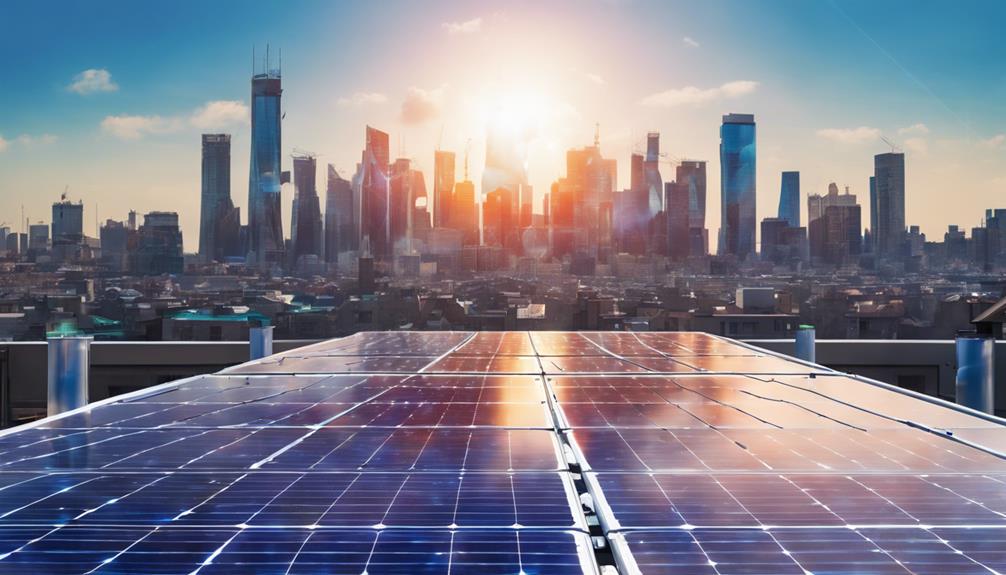
As the world shifts toward sustainable energy solutions, more campers are turning to solar power for their outdoor adventures. Solar panels for camper setups offer a reliable, eco-friendly way to power your amenities while enjoying the great outdoors. This article will delve into the various aspects of solar panels for campers, helping you understand their benefits, types, installation processes, and maintenance tips.
Understanding the Benefits of Solar Panels for Campers
Using solar panels for camper setups comes with a myriad of advantages. First and foremost, you gain independence from traditional power sources. This means you can camp in remote areas without worrying about access to electricity. Solar energy is also renewable and clean, making it an environmentally friendly choice. By harnessing solar power, you reduce your carbon footprint and contribute to a more sustainable future. Additionally, solar panels can save you money on fuel costs over time, as you won’t need to rely on generators or propane for power. This makes investing in solar panels a wise financial decision for frequent campers.
Choosing the Right Solar Panels for Your Camper
When selecting solar panels for camper applications, it’s crucial to consider your energy needs. Solar panels come in various types and sizes, and choosing the right one depends on how much power you require. Typically, there are three types of solar panels: monocrystalline, polycrystalline, and thin-film. Monocrystalline panels are known for their high efficiency and space-saving design, making them ideal for smaller camper setups. Polycrystalline panels are generally less expensive but take up more space. Thin-film panels are lightweight and flexible, but they usually have lower efficiency. Assessing your energy consumption and camper size will help you make an informed decision.
Calculating Your Energy Needs
Before investing in solar panels for camper, it’s essential to calculate your energy needs. Start by listing all the devices you plan to power, such as lights, refrigerators, and chargeable gadgets. Each device has a specific wattage, usually indicated on the appliance or in its manual. Add up the wattage to determine your total power consumption in watt-hours (Wh). This figure will guide you in selecting the appropriate solar panel size and battery capacity. For example, if your daily energy consumption is 500Wh, you’ll need a solar panel system that can generate that amount under ideal conditions.
Components of a Solar Power System for Campers
A complete solar panels for camper system typically includes several key components: solar panels, charge controllers, batteries, and inverters. Solar panels capture sunlight and convert it into electricity. Charge controllers regulate the voltage and current coming from the solar panels to prevent battery overcharging. Batteries store the energy generated, allowing you to use it when there’s no sunlight. Lastly, inverters convert the stored DC power into AC power, which is necessary for most household appliances. Understanding how each component works will help you build an efficient solar power system for your camper.
Installation Process: DIY or Professional?
When it comes to installing solar panels for camper systems, you have two main options: DIY or hiring a professional. Many campers opt for the DIY route to save on costs and enjoy the satisfaction of doing it themselves. However, it requires some technical knowledge and tools. If you choose to go the DIY route, numerous online resources and guides can walk you through the process step by step. On the other hand, if you’re not comfortable with installation or want to ensure optimal performance, hiring a professional might be the way to go. They have the experience and expertise to set up your solar system correctly.
Maintaining Your Solar Panels
To ensure the longevity and efficiency of your solar panels for camper, regular maintenance is essential. Start by keeping the panels clean; dirt, dust, and debris can significantly reduce their performance. Depending on your camping environment, you may need to clean your panels more frequently. Additionally, check the connections and wiring regularly for any signs of wear or damage. It’s also essential to monitor your battery health. Most batteries have a lifespan, and knowing when to replace them will keep your solar system running smoothly. Overall, a little maintenance goes a long way in ensuring your solar setup remains efficient.
Cost Considerations for Solar Panels for Campers
Investing in solar panels for camper systems involves several costs, from purchasing the panels to installation and maintenance. The price of solar panels can vary widely based on type, size, and brand. On average, a complete solar setup might range from $500 to $3,000, depending on your energy needs and the components used. Keep in mind that while the initial investment can be substantial, many campers find significant savings in the long run by reducing reliance on fuel and other power sources. Additionally, various tax incentives and rebates may be available for solar installations, further offsetting the cost.
Conclusion: Embrace the Freedom of Solar Power
Incorporating solar panels for camper setups into your outdoor adventures not only enhances your camping experience but also promotes sustainable living. By understanding the benefits, components, and maintenance requirements, you can make informed decisions about your solar investment. Whether you choose to install the system yourself or hire a professional, the freedom and independence that solar power provides are unmatched. As you explore remote locations and enjoy the serenity of nature, let solar energy be your trusted companion on the road. Embrace this eco-friendly solution and take your camping adventures to new heights!
By following this guide, you’ll be well on your way to creating a solar-powered camper that meets your needs while allowing you to enjoy the beauty of nature sustainably.





